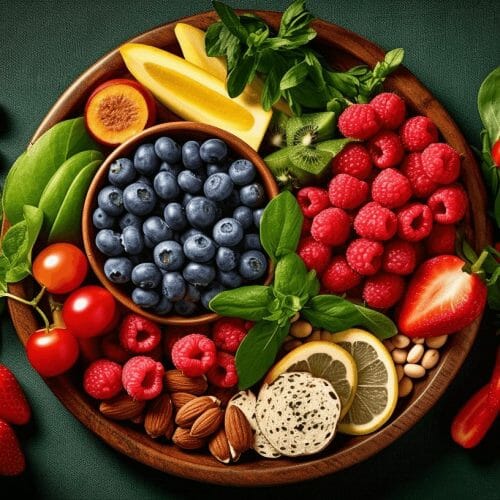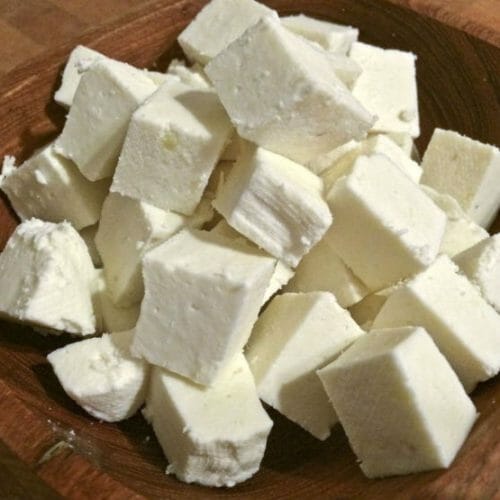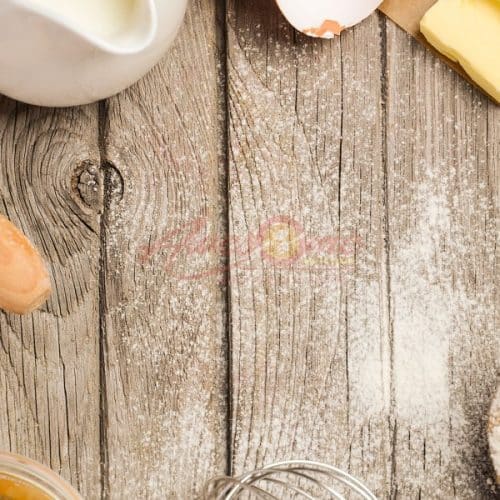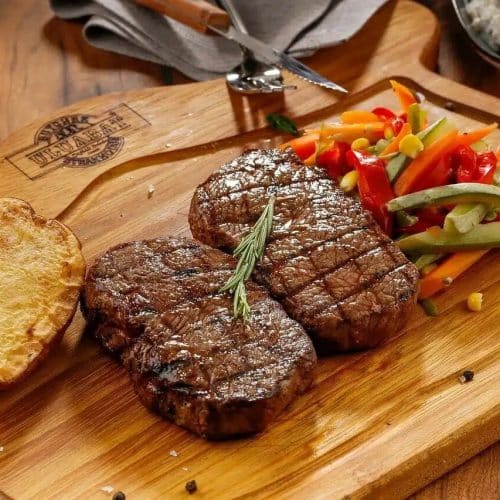A hot steamy cup of Filter Coffee, or ‘Kaapi’ as it’s fondly referred to, is an indispensable element in the daily routines of millions across India, especially in the southern parts. This refreshing brew, lauded for its full-bodied flavour and strong aroma, stands as an emblem of South Indian culture, embodying the welcoming spirit of its people.
Filter Coffee, prepared with ground coffee and a traditional coffee filter, offers a delightful escape from the bustle of everyday life, one sip at a time. Touted for its simple yet sophisticated preparation method, this indulgent beverage sets the pace for a day filled with energy and positivity. If you’ve been eager to try this South Indian magic elixir, you’re in the right place.
This thorough step-by-step guide aims to equip you with everything you need to know about making authentic filter coffee at your own pace in the warmth of your home. Learn how to make the perfect filter coffee at home with this easy filter coffee recipe, also known as filter kaapi.
This unique South Indian variation of the popular coffee beverage is made with the best coffee and special brewed coffee powder, creating a full-bodied and aromatic cup of coffee. Follow our detailed photo and video instructions to create your perfect cup of filter coffee at home.
What is Filter Coffee?
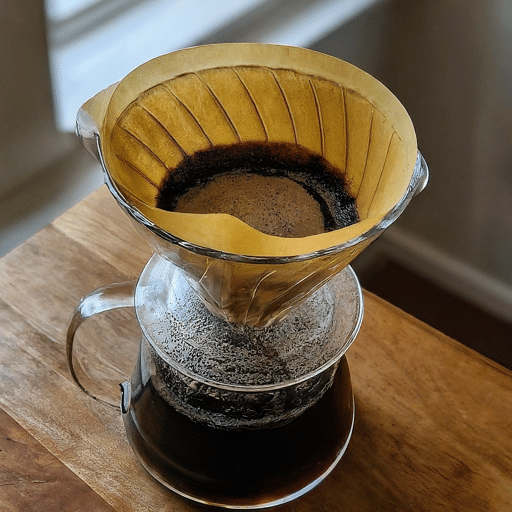
Filter Coffee in the kettle
Filter Coffee, known as ‘filter kaapi‘, is a traditional Indian coffee brew admired for its piquant flavour profile and lingering aroma. Characteristic to South India, this style of coffee has held a longstanding reputation in Indian culinary history, kept alive through generations of coffee enthusiasts. The name ‘Filter Coffee’ stems from the unique method of brewing the coffee, employing a specific stainless-steel coffee filter indigenous to South India, known as a dabarah and tumbler.
This method, also known as “degree coffee,” involves pouring the coffee back and forth between the dabarah and tumbler, giving rise to its other name, meter coffee. Other names for this beverage include Kumbakonam degree coffee, Mylapore filter coffee, and Madras kaapi.
This filter comprises an upper compartment with tiny perforations and a lower vessel that collects the brewed coffee decoction. Distinct from instant coffee, ground coffee powder is compacted within the upper compartment and topped up with boiling water. As the hot water percolates through the layered coffee grounds, it extracts the essence of the coffee beans, progressively descending into the container beneath.
After approximately 20-30 minutes, the richly flavoured coffee decoction is ready for the next stage of the brewing method.
The filter coffee, made with a paper or metal filter, stands out for the technique in which the coffee decoction and boiled milk are mixed with optional sugar to arrive at a perfect balance of robust flavours and tempered sweetness.
This timeless hot beverage, often paired with classic South Indian breakfast dishes like Idli, Dosa, or Medu Vada, signals the start of a new day for many South Indian households. Additionally, filter coffee is served to welcome guests and during festive occasions, reinforcing the deep-rooted cultural significance of this energising brew.
The Importance of Choosing the Right Coffee Beans and Equipment
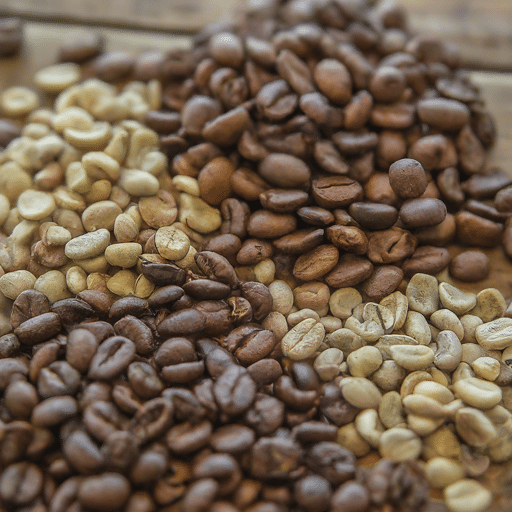
choice of coffee beans
The magic of filter coffee lies in the harmony between its main components—the selection of coffee beans, the correct grind size, and the special equipment used for brewing. The choice of coffee beans largely influences the taste profile of your filter coffee.
The most commonly used type in South Indian homes is Arabica, a blend of Arabica and Robusta, with a minor proportion of chicory. When mixed in small quantities, Chicory, a root extract, adds a distinct depth and colour to the coffee.
However, for a more authentic and flavourful South Indian filter coffee, it is essential to use high-quality filter coffee powder instead of pre-ground coffee. This ensures a fresher and more robust taste in every cup.
Popular Types of Coffee Beans for Filter Coffee
The unique taste of Filter Coffee primarily relies on the type of coffee beans used. Here are a few varieties that are popularly favoured:
- Arabica: Known for its delicate flavour and lower caffeine content, Arabica beans are often the first choice for Filter Coffee.
- Robusta: Comparatively higher in caffeine, Robusta beans have a stronger taste, providing a robust twist to your brew.
- Blend of Arabica and Robusta: A blend of these two can bring a balanced flavour profile to your cup of Filter Coffee, offering an ideal combination of strength and subtlety.
- Chicory Mixed Coffee: Small quantities of chicory are mixed with ground coffee to add a deep caramel colour and a hint of sweetness to the overall flavour.
South Indian Coffee Filter
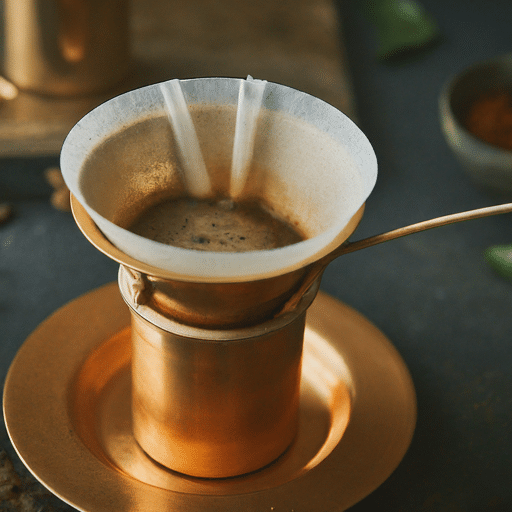
South Indian coffee filter in glass
Creating authentic South Indian filter coffee requires a special piece of equipment – the South Indian coffee filter. This traditional tool, usually made of stainless steel, consists of two cylindrical compartments placed above each other.
The upper vessel features perforations permitting the slow percolation of hot water through the compacted coffee grounds. Over 15-30 minutes, the concentrated coffee decoction collects in the lower chamber, ready to be mixed with hot milk and sugar in a coffee cup. A pressing disc and lid are also included in this neat apparatus.
This steel filter is available in various sizes and accommodates multiple servings. Through its simple yet efficient design, the South Indian coffee filter forms an integral part of the filter coffee tradition. It is responsible for the delightful brewing experience.
Coffee grinders
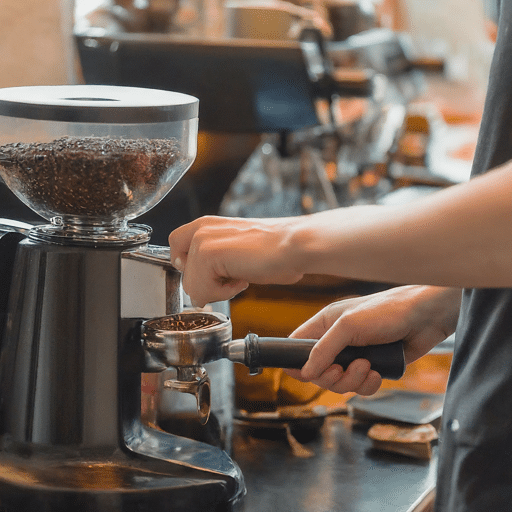
Coffee grinders
Filter Coffee requires the coffee beans to be ground to a specific consistency, unlike instant coffee. The aim is to achieve a medium-fine grind that closely resembles granulated sugar. This is where coffee grinders, specifically those designed for filter brewing, play a vital role.
Depending on personal preference and the number of coffee drinkers in your household, you could choose between manual and electrical coffee grinders. Manual grinders offer both portability and cost-effectiveness, making them suitable for occasional coffee indulgers.
Electric grinders, on the other hand, are a boon for regular coffee drinkers. They handle larger volumes with ease and provide consistent results. The critical aspect lies in regulating the grind size to ensure optimal extraction while brewing. Insert the filter into the coffee machine’s filter basket, then run it under hot water before filling it with fresh water and ground coffee.
Also Read: 7 best remedies to cure a food hangover
Ingredients Required for Making Filter Coffee
The beauty of filter coffee lies in its simplicity. With minimally processed ingredients, this warming elixir celebrates the pure essence of coffee. Here’s what you’ll need:
- Ground Coffee: Grinding fresh coffee beans just before brewing could enhance the taste of your filter coffee due to the preserved aromatic compounds. If pre-ground coffee is your choice, ensure it is of the highest quality and well within the use-by date for the best experience.
- Water: The water used for brewing severely impacts your cup of coffee. Clean, filtered water heated to just below boiling point optimises the coffee flavours.
- Milk: Full cream or whole milk enriched with natural fats heightens the taste and gives a creamy texture to your filter coffee.
- Sugar: Adding sugar is optional and can be customised according to individual preferences.
Coffee to water ratio
Striking a balance between the amount of coffee and water can drastically affect your filter coffee’s strength and taste profile.
| Coffee to Water Ratio | Result |
| 1:12 | Weak, subtle flavours |
| 1:16 | Balanced, smooth brew |
| 1:20 | Strong, bold flavours |
Types of milk to use
The type of milk used can create interesting variations in your filter coffee.
Full cream or whole milk is traditionally used for its creamy texture and subtle sweetness. However, if you follow a vegan diet or are lactose intolerant, plant-based milk such as almond, soy, or oat milk could serve as viable alternatives. Just ensure to warm the milk suitably for a perfect blend.
How to make Filter Coffee?
Ready to embark on your filter coffee-making journey? Let’s jump straight in!
Start by adding freshly ground coffee (approximately three tablespoons) into the perforated vessel of your South Indian coffee filter. Press this lightly using the disk. Boil 1.5 cups of water and slowly pour it into the top vessel until it’s almost full. Cover with the lid and let the brewing process ensue for about thirty minutes.
Once the coffee decoction collects at the bottom, our foundational ingredient is ready to pour a precise amount of water using a filter holder to create the perfect cup of filter coffee.
Preparing coffee decoction
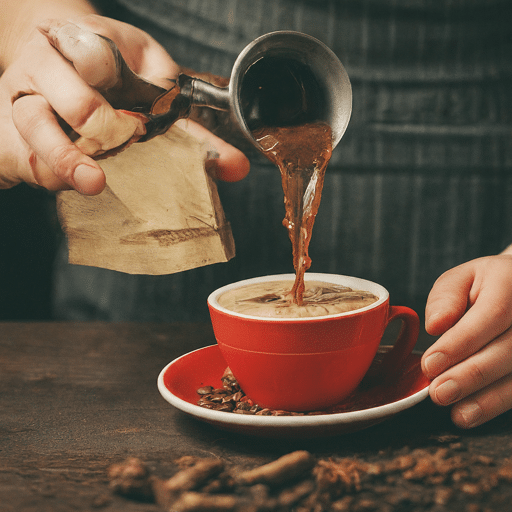
Method for Preparing coffee decoction
To start preparing a coffee decoction, measure out the required amount of ground coffee and water. Use a medium grind size for a balanced flavour. Place the ground coffee in a coffee filter or brewer and pour hot water over it in a circular motion. Allow it to drip slowly, ensuring a thorough extraction process. The brewing time is crucial for achieving the right strength.
Once the decoction is ready, mix it with hot milk and sugar to complete your perfect cup of filter coffee. This traditional South Indian method ensures a rich and aromatic brew with three teaspoons of coffee and 1 cup of water that coffee enthusiasts will appreciate. Enjoy your homemade filter coffee!
Heating and frothing the milk
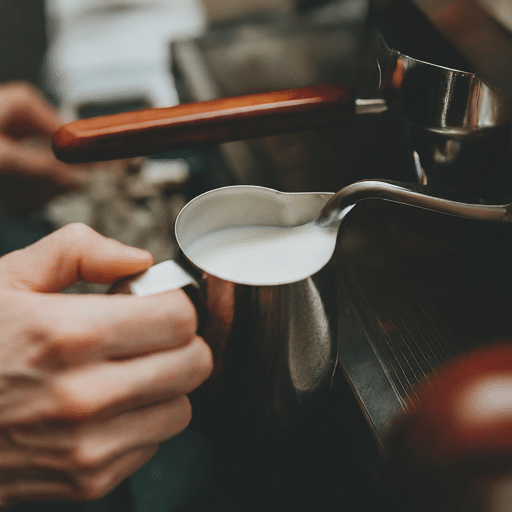
Heating and frothing the milk
Once your coffee decoction is ready, heat your choice of milk. Full-cream or whole milk is traditionally used for its rich texture and natural sweetness. Pour the milk into a saucepan and heat it over medium flame until it boils. Separating the cream or ‘malai’ that forms on top can further enhance the smooth texture of your filter coffee.
A trick to making your filter coffee even more indulgent is to froth the heated milk before mixing it with the decoction. Whisk the milk vigorously in a back-and-forth motion using a frother or a traditional churner, ensuring you attain a good amount of froth.
Mixing and serving filter coffee
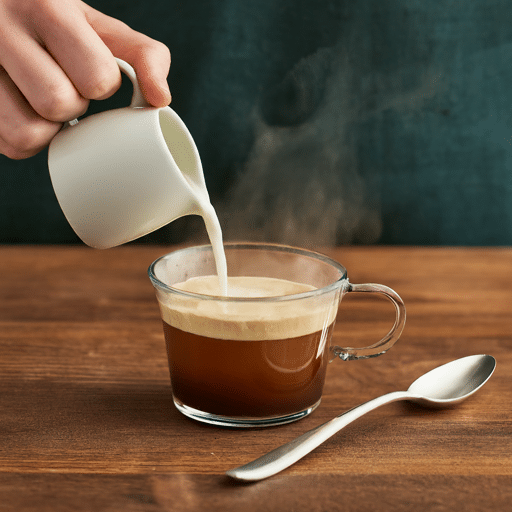
Serving coffee in the cup
With your coffee decoction and frothed milk ready, it’s time to compile the final pieces of the filter coffee puzzle. Take a tumbler and add approximately 1/4 to 1/2 cup of the coffee decoction, depending on how strong you prefer your coffee. Next, stir in the desired sugar (optional) quantity and pour in the hot milk, amounting to about 1/3 to 1/2 cup, based on your milk preference.
To make it frothy and fully dissolve the sugar, pour the coffee mix between the tumbler and the traditional ‘davarah’ (a unique pan-shaped vessel used to cool the coffee) a few times. However, don’t overdo this process, as the coffee may cool down. With a beautiful layer of froth crowning your mug, your filter coffee is now ready to serve.
Also Read: Why Coffee is One of the Healthiest Beverages on the Planet?
Tips and Tricks for the Perfect Filter Coffee
Mastering the art of Filter Coffee comes with repetitive brewing, tasting, and refining your method. A key aspect is adjusting the coffee-to-water ratio depending on how strong you prefer your brew. Start with a 1:16 ratio (20g of fresh coffee to 320ml ounces of water) for a balanced flavour, but feel free to experiment and find your perfect balance.
Similarly, managing the milk-to-coffee ratio goes a long way in personalising your Filter Coffee. If you like your coffee bold and strong, limit the milk quantity; if you prefer a milder, creamier taste, add less coffee.
Managing the coffee-to-water ratio
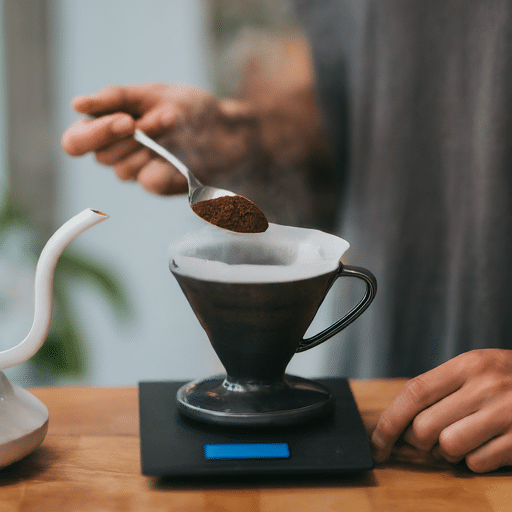
Managing the coffee to water ratio
Contrary to popular belief, a higher coffee-to-water ratio doesn’t always yield stronger coffee. It can sometimes lead to a bitter, over-extracted brew. Maintaining an ideal coffee-to-water ratio, or the amount used in relation to the amount of water, is crucial for a well-balanced and pleasant filter coffee. Typically, a 1:16 ratio provides a fairly strong brew, but this can be adjusted to match your personal preference for how much coffee you want in your filter coffee.
Adjusting the milk-to-coffee ratio
Striking the right balance between milk and coffee is a matter of personal taste. If you enjoy a robust coffee flavour, use less milk. On the other hand, if you prefer a much creamier and milder flavour, increase the quantity of milk. This fine-tuning can significantly enhance your filter coffee experience.
Intensity of brewing the coffee decoction
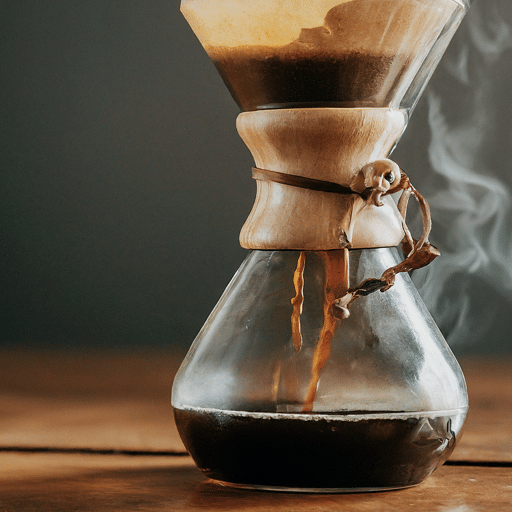
Intensity of brewing the coffee decoction
The intensity of brewing profoundly impacts the taste of Filter Coffee. Brewed for too long, it might turn bitter, while under-brewed coffee tends to taste weak. Generally, allow the coffee to brew for about 20-30 minutes for optimal flavour extraction.
Monitor this and make adjustments to fit your preferred taste profile. Remember to pour clean, filtered water slowly and in a circular motion to ensure proper saturation of the grounds. For the best results, boil water before starting the brewing process.
Also Read: Coffee Cake Muffins
Conclusion
Making a picture-perfect cup of Filter Coffee requires patience, precision, and lots of love. The journey from selecting the right coffee beans to brewing to the perfect intensity makes Filter Coffee an art. This step-by-step guide is intended to break down this complex process into easy, doable segments, enabling you to experience the magic of traditional South Indian Filter Coffee within the comfort of your home. Happy Brewing!
Frequently Asked Questions
Can I make filter coffee without a coffee filter?
While the traditional method uses a coffee filter, it is possible to approximate the taste with a French press or even a fine sieve in a pinch. However, to get the authentic taste of South Indian Filter Coffee, a unique coffee filter is recommended.
Can I make filter coffee using non-dairy milk?
If you follow a vegan diet or are lactose intolerant, plant-based milk alternatives like almond, soy, and oat milk can perfectly substitute dairy milk in your Filter Coffee. Just ensure that you warm the milk suitably for a great blend.
Can I use pre-ground coffee for filter coffee?
You can use pre-ground coffee for this recipe as long as it resembles granulated sugar in texture. However, freshly ground coffee beans can greatly enhance the taste due to the preserved aromatic compounds.
How do I store the coffee beans for optimum freshness?
Coffee beans should ideally be stored in an airtight container at room temperature. Avoid exposure to heat, moisture, and sunlight, as these can reduce their freshness.
How can I adjust the strength of my filter coffee?
The strength of Filter Coffee can be modified by tweaking the coffee-to-water ratio, the milk-to-coffee ratio, and the brewing time. More coffee and less water yield stronger coffee, while more milk results in a creamier, milder flavour.







